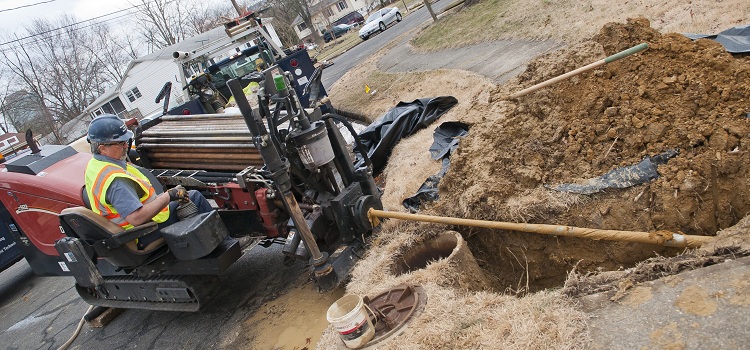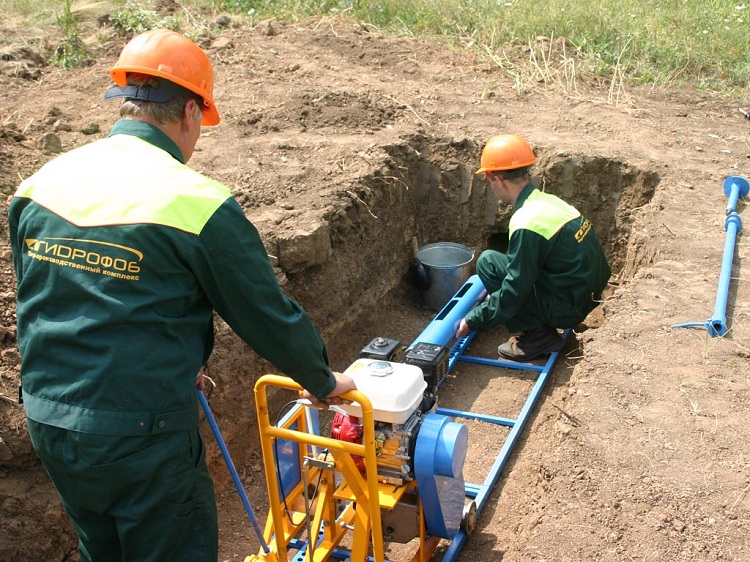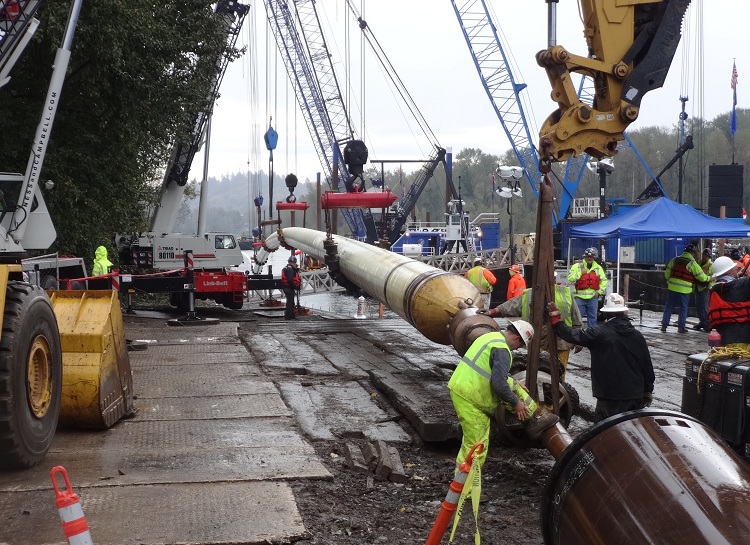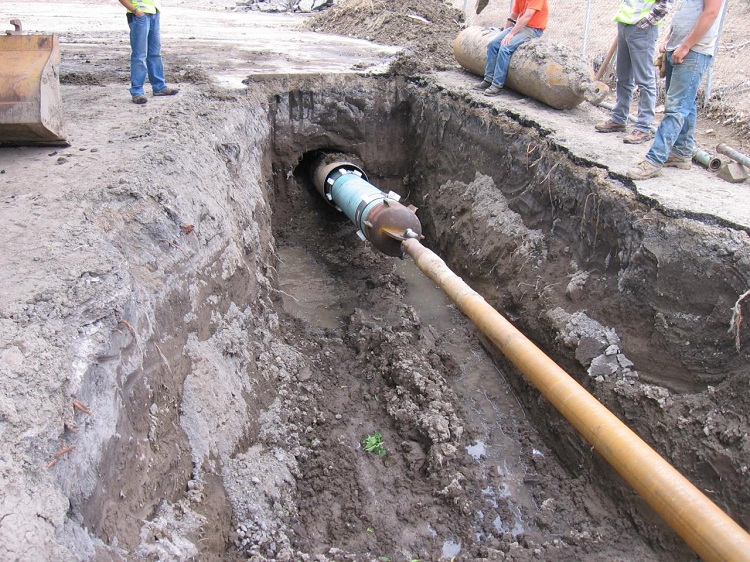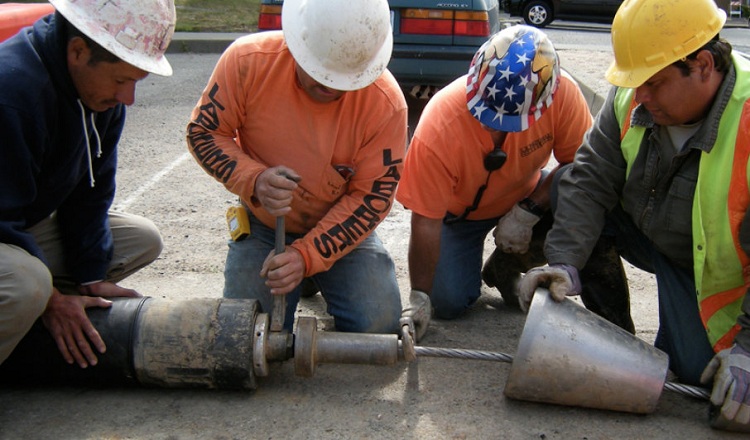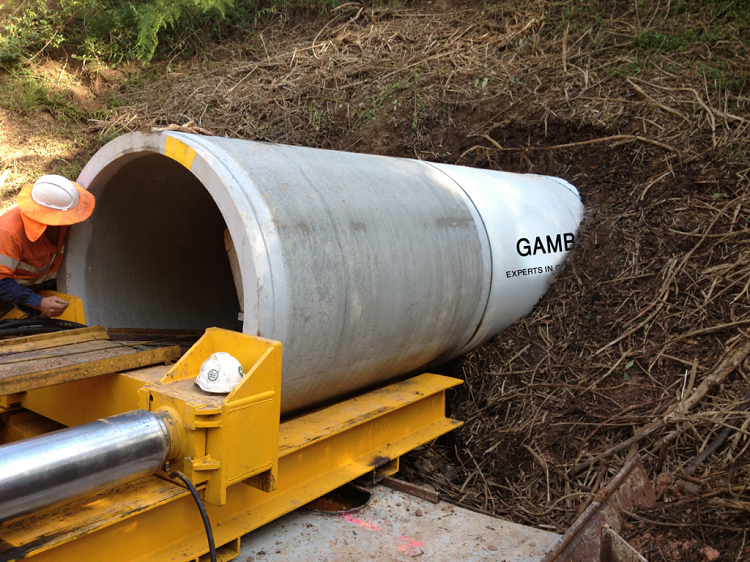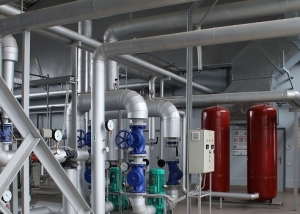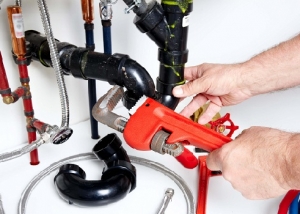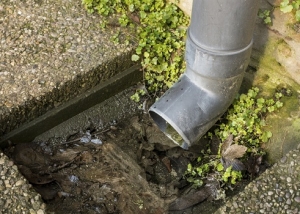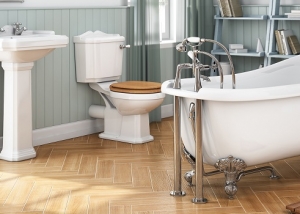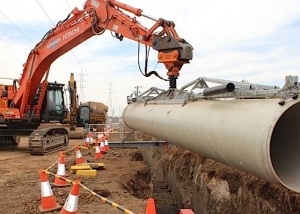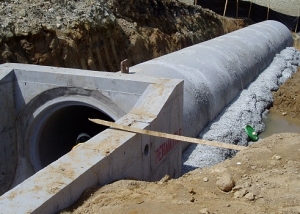Trenchless pipe laying is a method that allows you to mount pipeline communications without opening the ground. Thanks to this laying option, the appearance of the site, the integrity of asphalt roads, the destruction of trees, etc. are excluded. Today, this method includes several possible implementation options.
Content
Benefits of Trenchless Piping
The most common method of laying pipeline structures is considered a trench. However, this installation option has its drawbacks, which include:
- Digging up the soil entails a violation of the fertile layer;
- the elimination of trees and other plantings;
- high cost of installation work;
- long preparatory stage.
Note! When the channel for the pipeline passes through the road surface, the destruction of asphalt cannot be avoided, so after the work the road will have to be reconstructed. In addition, if this is a fairly busy section of the road, then blocking it can be difficult. In such cases, trenchless (closed) communication laying comes to the rescue.
The trenchless method has the following advantages:
- less material resources are required for the work;
- high speed of installation;
- minimum number of workers;
- environmental friendliness;
- the possibility of laying pipes all year round (installation of pipes in an open way in winter is difficult due to frozen soil);
- work safety.
If the installation of the pipe is carried out on a small segment, for example, under the pavement, then you can perform all the work without involving special equipment. Such wiring is quite simple. It requires a cylinder of the desired diameter and a stackable rod. Thanks to this adaptation, it becomes possible to remove the earth manually, however, before that, work is carried out to dig out small pits on both sides of the road. For closed installation in large areas, special machines and assemblies are used.
Trenchless laying methods
The closed method of replacing pipes is used for wiring various communications. These include:
- communication cable wiring;
- installation of various pipelines (oil, gas, heating);
- wiring of sewer structures and water supply systems (cold and hot water supply);
- pipe repair and replacement.
Today, there are several methods for trenchless laying of pipelines, some have different ways of execution. The technology of trenchless pipe laying is differentiated into the following options:
- replacement of old pipes with new ones (sanitation);
- puncture of soil;
- soil bursting;
- horizontal directional drilling (HDD).
Remediation is carried out when the repair of an existing pipeline or its replacement is required. In other cases, direct wiring of the pipeline structure takes place. Trenchless pipe laying is quite common and its use avoids many of the problems that distinguish an open laying option.
Repair and laying of the pipeline with the help of rehabilitation
Remediation is a closed method of piping and is carried out with the replacement of the old communication with a new one. It is divided into 2 options for work:
- relining.
- renovation.
In the first case, the old communication is preserved and serves as a capsule for the new pipeline. Before laying, the old pipeline is cleaned of debris and foreign objects. Next, a new line of smaller diameter is drawn into it. Pipes made of modern materials have excellent technical characteristics, and additional protection from an old design reduces the chance of an emergency in the system.
There are a lot of options for performing relining work. These include retraction of pipes, which is carried out from the end of the old communication and pushing from the beginning of the pipeline. When repairing a certain section of the line, it is disconnected from the system. Then, a new design, made of modern materials, is introduced into this old segment. This process can take place with partial destruction of the old pipeline.
Helpful information! For the period of repair, as a rule, temporary pipes are installed to replace the repair segment of the structure. After the completion of the relining works, temporary pipes are removed and the repaired section of the pipeline is connected to the system.
If relining, in fact, is a repair of the old communication using new materials, then renovation is an update of the line, which can occur with a change in the diameter of the pipeline. During renovation, the old structure is destroyed by introducing a new line into it. In this case, the fragments of the pipe remain underground and create a sealing shell for new communication.
The rehabilitation method allows the replacement of communications from any materials: ceramics, concrete, metal, etc.
Piping installation
Soils that use the method of puncture of pipelines, as a rule, are clay and loamy. This method allows pipes with a cross section of up to 600 mm. The distance over which the structure can be laid with this option reaches 60 m. As a result of such wiring, the soil is compacted around the pipe in a circular direction. The force that is necessary for the puncture is equal to an indicator of 150 to 3000 kN. This effort is made thanks to a special technique. The most common option for puncture using a hydraulic jack.
In most cases, to reduce friction and resistance in the soil, a cone-shaped tip is put on the pipe, the base of which protrudes about 2 cm relative to the pipe itself. If the pipeline has a small cross section, then the use of such a tip is optional. In this case, the puncture is provided by the pipe itself.
Note! If you do not use a cone tip, the puncture accuracy will be higher. This is due to the fact that when penetrating through the ground, the cone can run into natural obstacles and deviate from the puncture line.
The puncture rate, as a rule, ranges from 4 to 6 m / h. It depends on the characteristics of the soil and equipment used in this trenchless laying option. In some cases, to increase the speed of the pipe, vibration is used, which, together with the jack force, allows you to move through the ground at a speed of 20 to 40 m / h.
In addition, there is another type of pipe laying with a puncture, which is used in cases where the soil is easily eroded by water flows. This method is called hydraulic piercing. This installation is carried out using a stream of water. Directional flow destroys the soil and forms a well into which communication is placed.
Pipe installation
Trenchless laying of pipelines can also be performed by the method of punching. In most cases, this method is used to conduct steel pipes with section sizes up to 2000 mm. Punching is very similar to a puncture, however, the difference is that it is carried out by the open end of the pipe. As a result, a pipe is removed and an earthen pillar is removed from it.
In this case, hydraulic jacks are used to create sufficient force. They are installed symmetrically over the entire cross section of the pipe. The soils in which these works can be carried out belong to groups I – IV (clay, loam, sand, etc.). The diameter of the pipes that can be used with this method varies from 600 to 1720 mm. Laying distance, as a rule, does not exceed 100 m.
Initially, digging a pit is performed. Next is the installation of a thrust wall, on which jacks are subsequently mounted. The first link of the conductive pipe is connected to the jacks located on the plate. As a result, the end of the pipe remains free.
The jacks create a force that is transmitted to the pipe, and it penetrates the open end into the ground. When penetrating through the soil, a column of earth accumulates inside the part. Its removal is carried out using shovels (with a long and short handle) and percussion devices, which are based on pneumatics.
Pipe laying with HDD method
Horizontal directional drilling is a method by which trenchless pipe laying is also performed. A feature of this method is the use of drilling rigs. There are three main stages of trenchless pipe laying using the HDD method:
- well wiring;
- well expansion;
- pipe laying.
Trenchless horizontal drilling is performed using drilling equipment, which is equipped with a special tip. Such a tip fits into a flexible rod, which allows it to change direction when drilling. This is primarily necessary in order to avoid a collision with natural obstacles in the soil. The tip has holes that are necessary for cooling it during operation. In addition, a navigation apparatus is located in it, which controls and corrects the drilling path.
The expansion of the well is performed by changing the drill bit to the expander. In order to make a well with a large diameter, expansion can be done several times.
Important! The diameter of the well should have an indicator that is 30% larger than the cross-sectional size of the pipeline being laid.
At the final stage, the pipeline is pulled. The pipes are pulled in this way: the communications lash is fixed to a special rod, and then the HDD machine pulls the structure into the well. In order to reduce the friction index when pulling the pipeline through a horizontal channel, a drilling fluid is used.
Trenchless pipe laying for various networks is a modern technique that saves resources. Thanks to several ways to implement such a technology, you can choose the best option for any situation.
